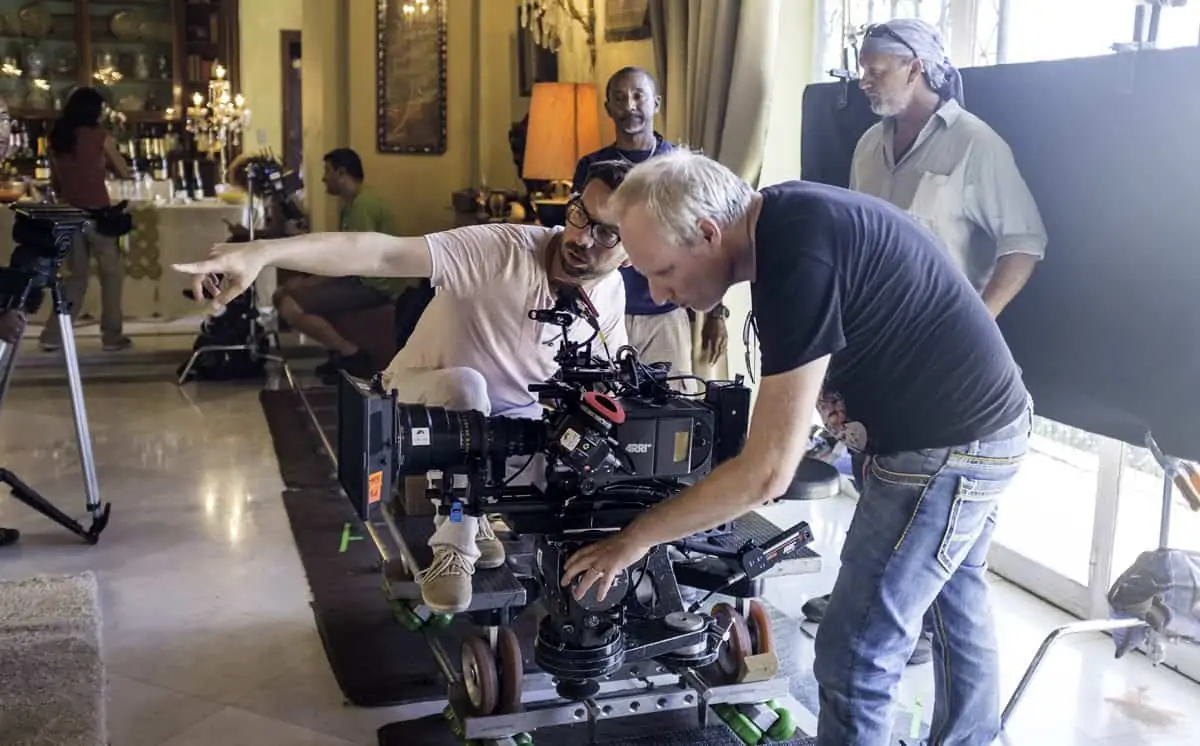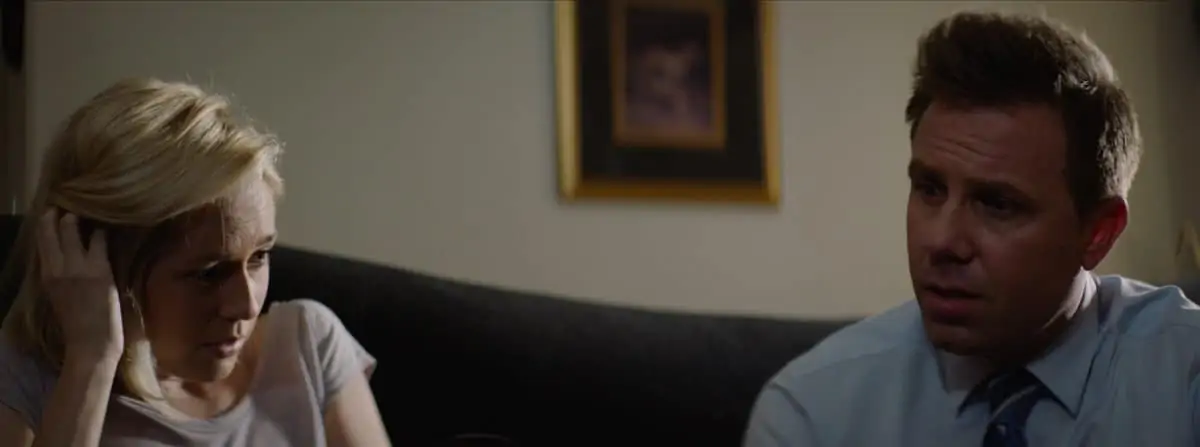Seeing red
A nurse (and recovering user) sees addiction sink its teeth into her own son in Brad Anderson’s sanguinary horror, captured by Björn Charpentier SBC.
A gripping family drama laced with gore, Blood follows recent divorcee Jess (Michelle Monaghan) as she moves back into her old farmhouse with her two children, Tyler (Skylar Morgan Jones) and Owen (Finlay Wojtak-Hissong). But when Owen is bitten by their pet labrador, Jess’ already fragile household implodes.
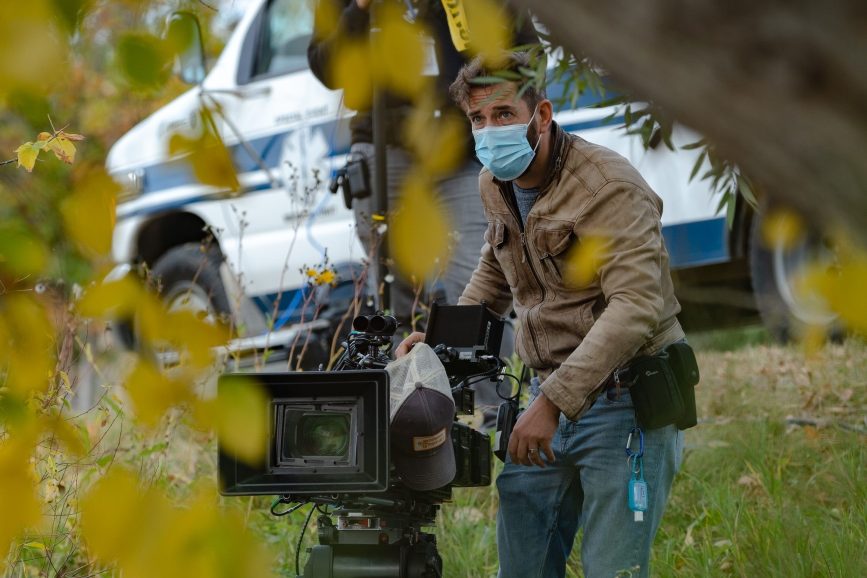
When offered the chance to work with Brad Anderson on their third shoot together, Björn Charpentier SBC leapt at the chance. But there was one small problem: “I don’t like horror movies,” the cinematographer confesses. In his eyes, Blood represented more of a love story “about a mother who will do everything to save her son. That’s something I anchored on because I’m a parent as well.”
In preparation for filming, he embarked on a diet of horrors, including 2013’s The Conjuring, but he remembers having to press pause after barely five minutes of viewing. Thankfully for Anderson, he soon developed a stomach for the genre.
Blood follows 2018’s Fractured and Beirut (Charpentier’s first feature as DP) as the duo’s latest film, shot in autumn 2020 in Canada. Thanks to the pandemic, the project began with a period of remote prep, during which the DP focused not just on the film’s visuals but its cinematographic structure. To kick things off, he crafted his own moodboard for the director to show him what ideas he had. “Instead of going straight into Brad’s brain and work on what he has in mind, I like to work on my own ideas to think over some new perspectives,” he explains.
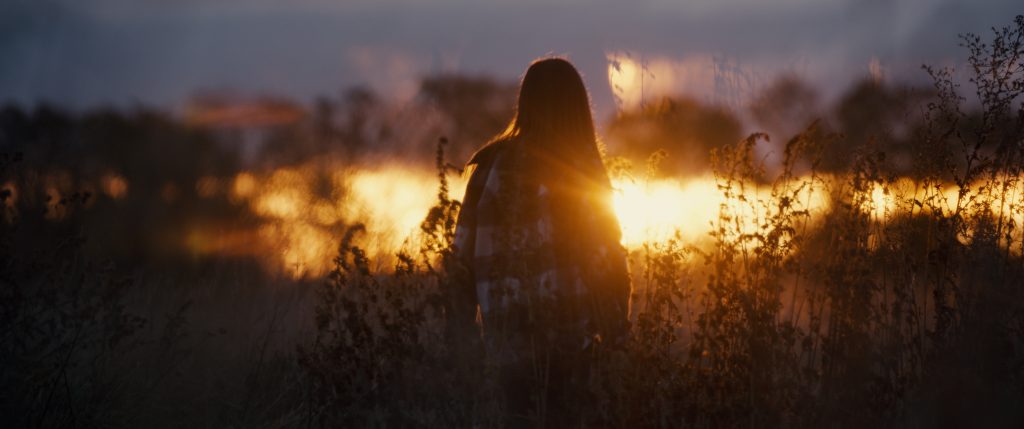
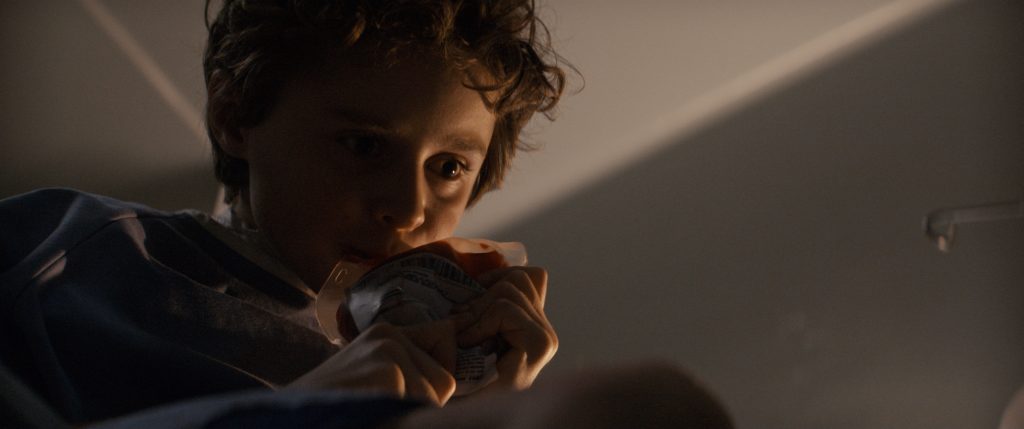
He saw the story as having three distinct acts and reflects this in his lensing choices (a reference for this was Tobe Hooper’s Poltergeist). Having the three-act structure to the cinematography was also useful reference for the crew if they were unsure about which lenses or filters to use for which scene. “As the movie progresses, we want to go visually dark and different,” he says. Act one bleeds into act two when Jess is forced to cut her own wrists. Although the beginning was shot on 75mm for close ups, the second act moves to 50mm. In the third act, which begins when Jess’ patient meets a sticky end, they would go for 35mm, then return to 75mm to shoot Jess’ ex-husband, who is pleasantly oblivious to the gory goings-on.
With the transition from 75mm to 50mm, Charpentier wanted the camera to float around Jess as her blood is draining to replicate the dizzy feeling that can come when you give blood. “You’ll see the camera be at a low angle and it’s always floating around,” he says. “The moment she collapses, as well. We really want to have that feeling that she’s not really in control, and more than that, she’s losing her physicality.”
He chose Panavision’s G series Anamorphics, paired with the Sony Venice in Rialto mode, and these would help shape character arcs – especially Jess’. “The reason I chose these is because I wanted to find distortion on the lenses. I wanted a lens with a lot of character. Whenever we go to 35mm close-ups, all the vertical lines – the house, the doors – start to bend and distort the image. Jess’ mind is distorted in a way, so we wanted to visualise that through the lens.”

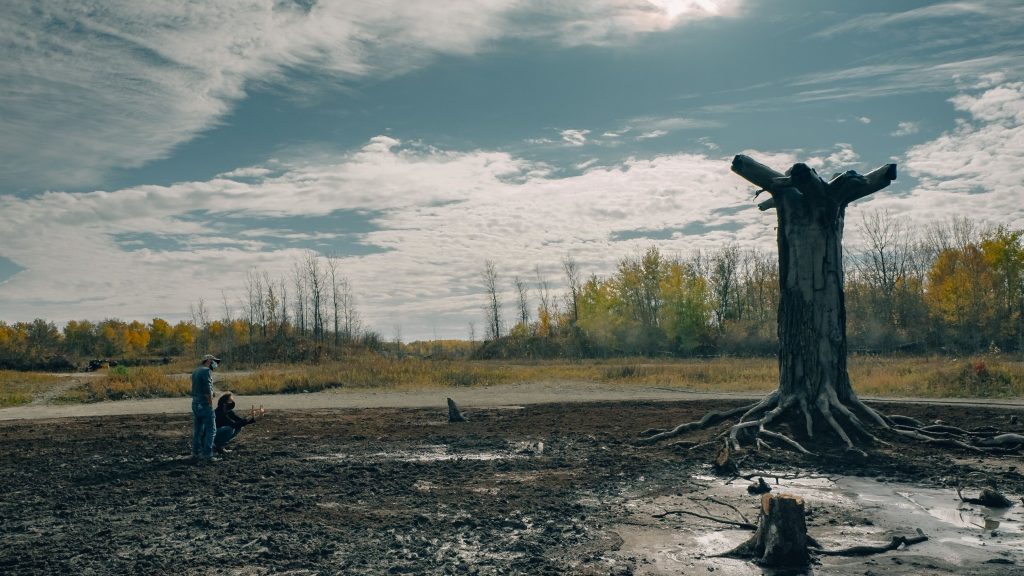
As well as the glass, he also wanted to craft a distorted effect with the image quality using filters. At the beginning, he used Glimmerglass to soften the image. At the second act, he goes to half Glimmerglass, and in the final act, he opted for 1/8 Glimmerglass, shifting the movie’s contrast ratio. “My DIT would say, ‘Björn, you’re not matching in contrast – I need to add more contrast,’ but that’s the whole idea,” he smiles. “If you take a picture of the close-ups in the first part and then in the third part, they should look like they’re from a completely different movie. I don’t want it to be on the nose, but it’s nice to feel this transition throughout the whole movie.”
Charpentier was keen to use the Sony Venice Rialto, hired through Panavision, for a number of reasons, but a major factor was that he didn’t want a huge camera when filming with a young cast. “At that point, I didn’t know who would play Owen and how experienced he would be – it could have been his first job as an actor, and I didn’t want to have this big camera getting very close to him,” he explains. “But it turned out the boy had more experience than I did!” The camera’s ease in switching from Steadicam to dolly or handheld mode was another positive, as well as its manoeuvrability for tricky shots, including a bathtub scene.
After remote prep in Belgium, Charpentier flew to Winnipeg, where he worked with largely the same team as he had on Fractured apart from the key grip. A fortnight of quarantine ensued, then he could do camera tests and lens studies with Monaghan and Wojtak-Hissong, as well as 309 light/gel tests!

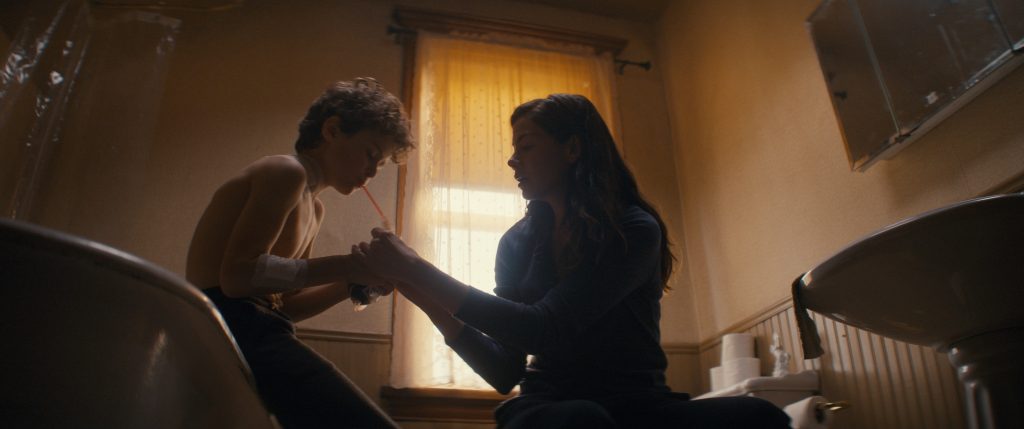
Principal photography was spread between Jess’ house (around 16 days), a school-turned-hospital (five days), and a few days at the spooky tree location. The team ended up repainting the house they secured, as originally it was all white. Charpentier asked art director Rejean for a glossy rather than matte paint job, as he was keen to work with reflections.
“I like to light rooms with practicals – this is key to me,” he explains of his lighting approach I push light through the windows, but on the floor I don’t have much gear.”
The DP explains that he lights depending on the character’s emotional state. “I love to work with colour contrast, so in every frame, you always feel two to three colours of light,” he says. “It might be daylight, tungsten light, fluorescent light, headlights of a car – whatever it is, you always see there is always a colour contrast.”


He used lighting to create a contrast between Jess’ house at the beginning, which is bathed in warm, inviting lights, and the house’s basement, which halfway through the film assumes a green light and creates a sickly, unappealing atmosphere. To create this look in the basement, he used Astera Nyx bulbs with a green core temperature, complemented by a little daylight through some tiny windows and some gelled fluorescent tubes above the workbench.
“It’s very rare that I use primary colours,” he notes. “Usually, if it’s on a light it will be a green gel, there will be some yellow in there. If it’s a blue gel, I’ll put some green in there so it’s all a bit more grounded in reality – it’s not primary in any way.”
That said, Anderson was keen to play as much as he could with the colour red, as he and Charpentier had done with yellow on Fractured. When the family is at the hospital, there is a red light streaming through the window “like a bloody sun”, as the DP describes it, aided by red gels on the windows – likewise when Jess is asleep on the sofa at home and she is awoken by her son. When Jess’ ex-husband’s new baby sleeping, we see it is clutching a red toy.
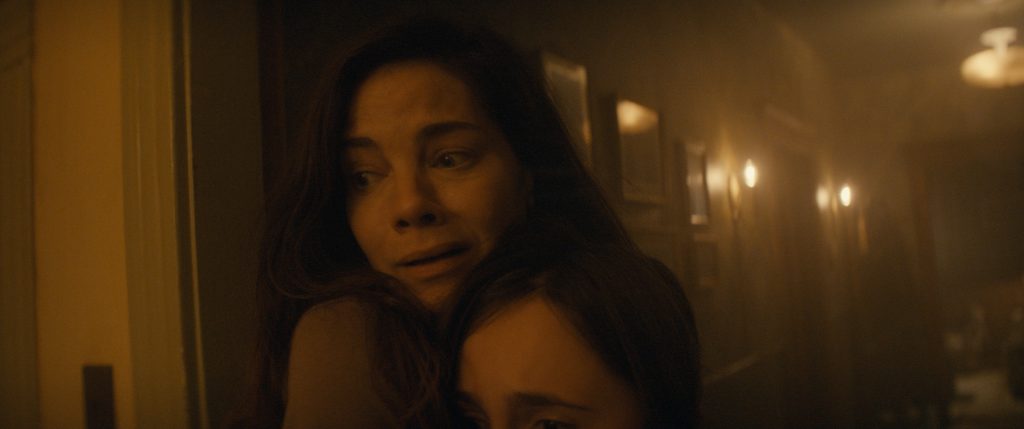
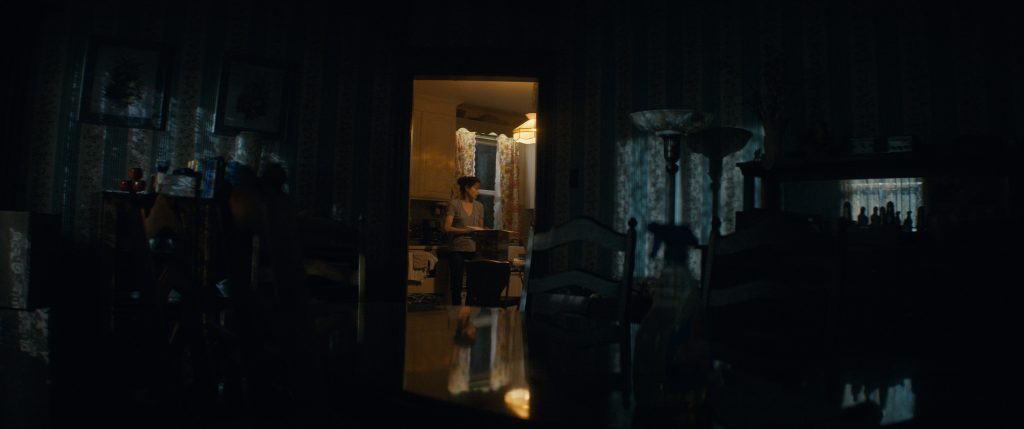
Charpentier loves operating and draws on this experience in his framing and composition. “I call [operating] ‘being in the trenches with the actors’,” he says. “Being behind the camera gives me an advantage. It’s also a trust that you need to build with actors, and be very mindful and respectful about – then they will allow you in their inner circles, and get closer to the emotion in a way.” He was joined by 1st AC Jason Heke, 2nd AC Steven K. Johnson, and Steadicam Matt Schween with 1st AC Pascal Boisvert, in capturing Blood.
Because of COVID, colourist Jim Fleming worked on the grade remotely, with Charpentier assisting as best he could from his challenging office set-up. “My office has a lot of windows, so I had to spend three days in the summer under a blanket looking at the screens,” he says with a grin. “It was very warm!” They adopted Fleming’s LUT for the shoot as it was very close to what they had conceived, with a lovely, filmic grain to it.
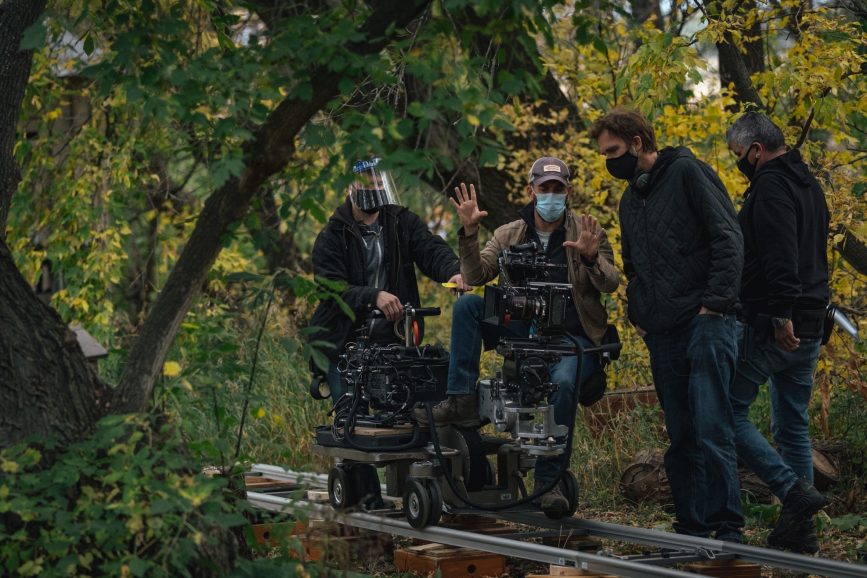
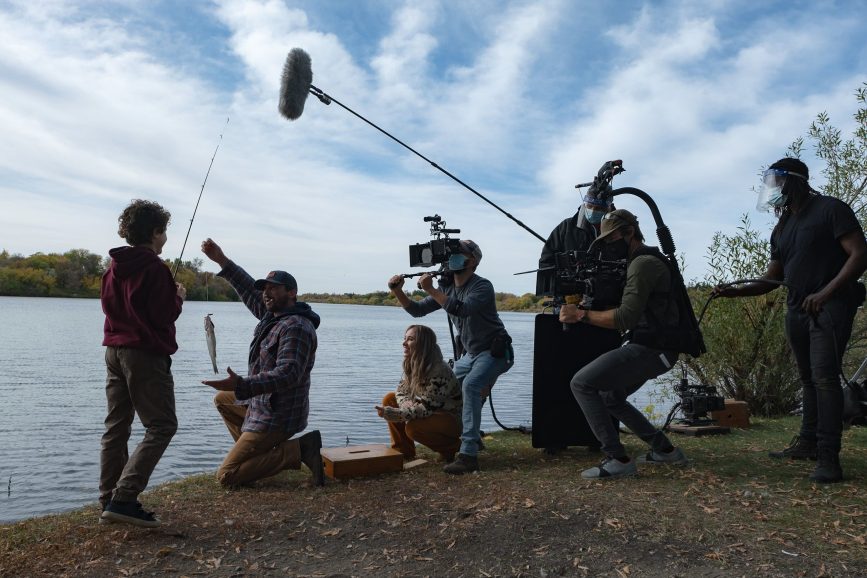
The DP is especially proud of creating the eye effects on Owen, crafted with the help of a beamsplitter. The idea came to him from an interview he’d seen with Ridley Scott when he was working on Blade Runner. Scott had mentioned that his DP, Jordan Cronenweth ASC, came up with an eye effect with a beamsplitter effect. So, when it came to testing, Charpentier asked for a beamsplitter and showed the results to the director.
“He really liked it, but he was concerned because it could take much time – we needed a quick solution,” he recalls. In the end, the crew didn’t find a real beamsplitter but nabbed one that was security glass: “It was way darker than normal, and it was also warmer, so it would hold back three stops of light,” he says. “When we did camera tests, it was a good thing we were shooting on the Sony Rialto because I could boost it up to 2500 to compensate those four stops. It’s really three stops, but we wanted to shoot the night dog attack at high speed at 48fps, so I lost four stops of light. Having the Rialto was a great benefit for me for that.”
He adds: “That’s the stuff I like – finding those ideas to support the character, and that’s what I do with every character.”

